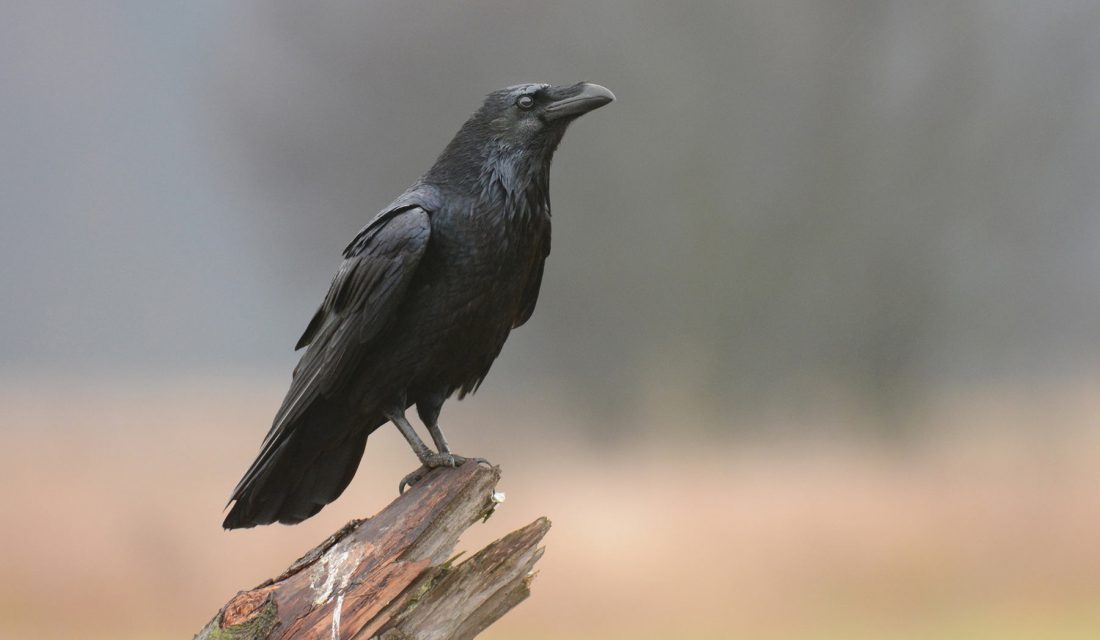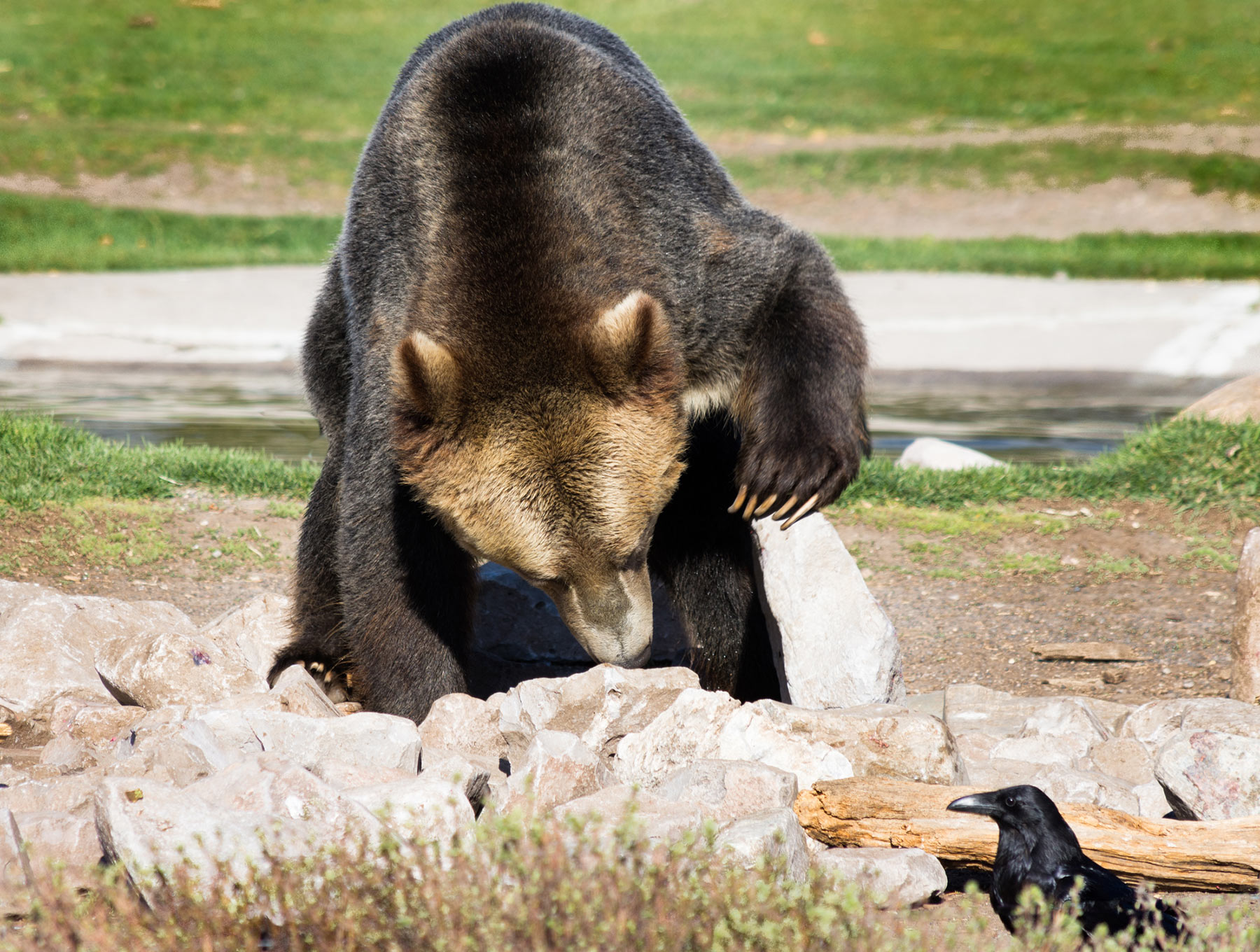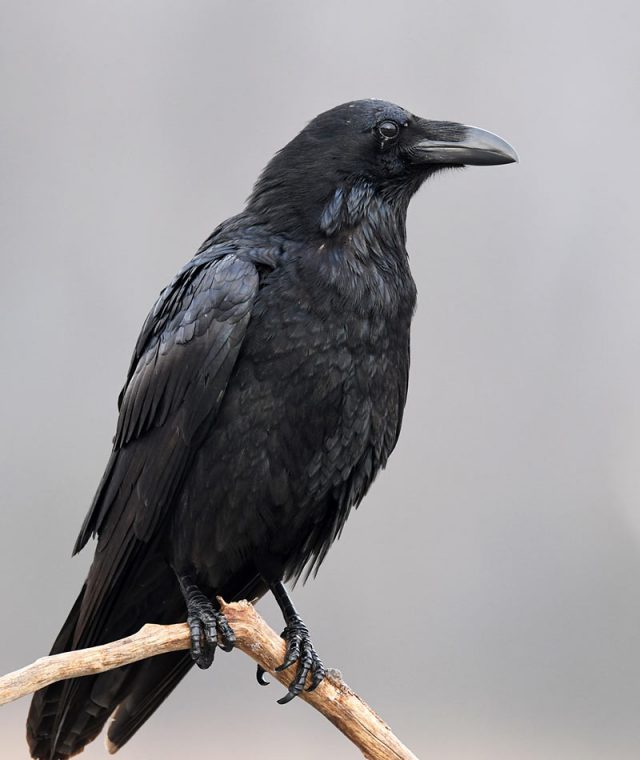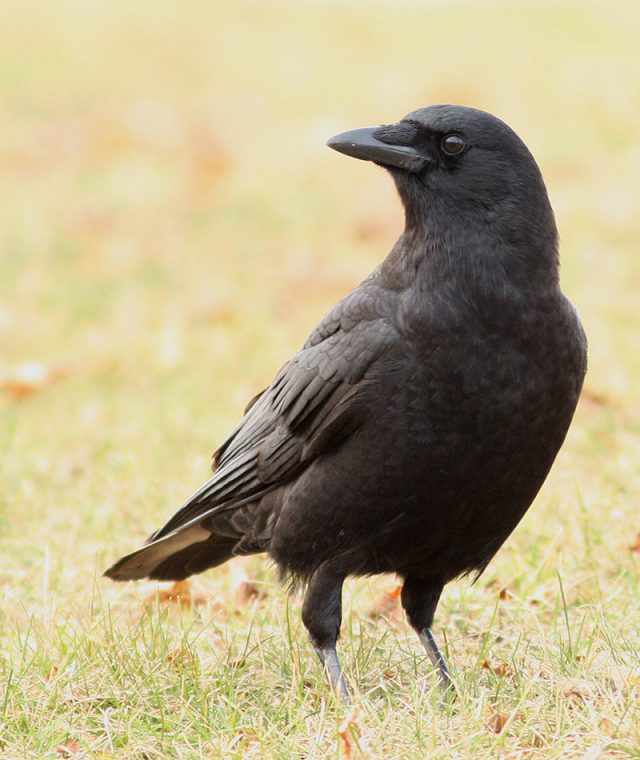Humans from all over the Northern Hemisphere have always been fascinated by the Northern Raven, including us.
In turns revered or despised, this large, black songbird has rarely left anyone indifferent!

In North America, it held a central part of many Indigenous myths and traditions, depicted as a trickster, a healer, a messenger, a teacher and even the creator of all life. But when Europeans came to these shores, they brought along their fear and superstitions about the raven, believing that this bird was preying on farm animals and destroying crops. Because of this, the raven had been exterminated from areas of Canada, including the southern Prairies!
Ravens vs. Crows
Since then, Northern Ravens have made a comeback, and are doing well in most of Canada. Because of this, many Canadians have observed these amazing birds before, but they can be easily confused with another well-known corvid (the crow family), the American Crow.
The easiest way to distinguish the raven from its relative the crow is by its larger size. Ravens can have a wingspan of a metre and a half, but a crow’s is under a metre. The raven has a wedge-shaped tail when spread, while the crow has a fan-shaped tail. If you observe them from up close you may notice that the Raven has a much thicker bill and a ruff of throat feathers called “hackles”. But other than its striking appearance, why has the raven always stirred up such strong impressions?

While these cosmopolitan birds are known to inhabit all sorts of habitats — forests of all types, grasslands, mountains, coastlines, deserts and even the Arctic tundra! — they live quite comfortably alongside people, in our towns and cities. Ravens also have a very diverse diet, eating just about anything they can find, from plant matter and invertebrates to eggs and other animals. They even scavenge carrion! Ravens are social animals, spending their adult life guarding their territories in mated-for-life pairs which may gather with others to socialize and hunt. Ravens live for up to 20 years, rarely becoming a prey to other animals.
The Trickster
But the most astounding fact about Northern Ravens is not their adaptability. These birds are thought to be exceptionally smart animals! They are keen opportunists and excellent problem solvers, being able to use tools to get what they want. They learn by observing, and can even teach other ravens about what they’ve found out.

As most social animals are, they are good communicators and are known for playing and even tricking other ravens. They also use a great variety of cries and calls (sometimes imitating sounds from their surroundings) in order to give information to other ravens. They even manage to interact with other species, for example calling wolves so that they kill a prey the ravens spotted and leave the leftovers for them to scavenge on!
The more we study the Northern Raven, the more we discover how unique this bird really is. This, in itself, is enough to understand why our ancestors were so taken by it!






10 comments
Very interesting. But I think its a bit of a stretch to call a raven a ‘songbird’.
Raven…good stuff!!
Loved The Raven!!!
I like seeing Ravens. We often see them where I live Sydenham Ontario. My uncle kept one as a pet. It knew there was a moment when some one was smoking that he could snatch the cigarette and often did so and got pursued throughout the house least a fire was started. Also very verbal. I thought I heard a ghost one night and it was him talking in his quarters
I LOVE them! … I have a Raven with a broken wing and ‘she’ always comes to be fed … when I see her, I run outside to give her some food! … then she goes to ‘hide’ in one of my neighbors Mugle Pine or the Spruce Tree.
The WildLife man came to catch her so they could fix her wing, but she got away! … so sad.
I feed Magpies, my Raven (and Crows in the summer) during the winter and I love to watch them … I have a ‘motive’ … BECAUSE in the summer if we have SLUGS (when wet) and those terrible LILY BEETLES, well I want them to EAT THEM UP!
Do the Magpies store the food in their nests during the winter? as I see them grab a piece of bread or meat and fly off to ‘specific’ Spruce Trees where I am assuming they have a nest … I have a few YOUNG Magpies that never saw a winter before, so WHERE do they live?
Thank you for your comment! In winter, magpies are known to form communal roosts in coniferous trees where they find protection from predators and weather. Magpies are also known to cache food for short periods of time.
I got home today after my dayshift, which was extended by an hour and a bit around 7.20 pm. I let the dogs out several times, there was no mess to clean up, that surprised me. The dogs are tied up and unleashed in the house, Sasha wont stay out long, but Tasha likes it outside, I looked out and a Raven was walking up towards her, she lunged at it like any spaniel would, but the Raven never backed down, kept coming, Tasha ran back to the door. I knew something was not right, and let her into the house,
I went out and walked right up to it, it was friendly. Got a sandwich left over in my pail but it nibbled at it, but not interested. eventually it was on my arm and I was petting it. I called my farm neighbour and he told me it happened to his wife 20 years ago, she brought a cage and in my living room it sits, I was worried the feral cats would get it, I put water in, a little sweet feed and expensive dog pellets a clean old pair of sweat pants. It has layed down and is sleeping.
how is your raven?
I have 2 beautiful Raven living on our silo ladder this summer. They made a HUGE nest . I am truly enjoying watching them. Stunning birds. Would love to befriend them , anyone have any tips ? Should I try to leave food for them once snow falls ?